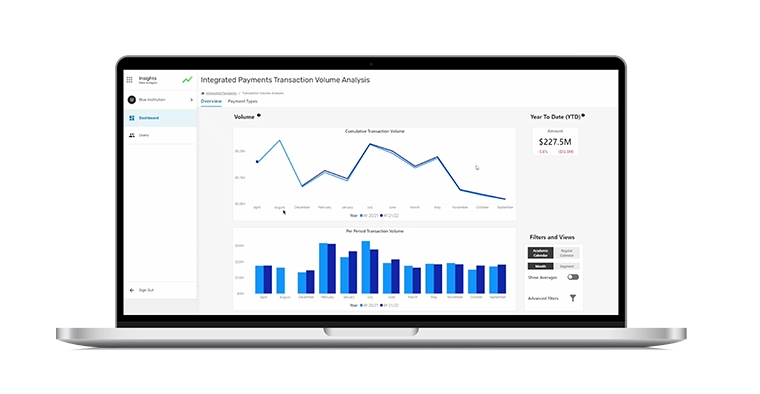
Why universities turn to print cost recovery to cut waste, save resources
Walk into virtually any computer lab or library on a college campus and you’re likely to see rows of print stations processing countless print jobs. Look a little closer and you’ll also find the blue recycling bins overflowing with wasted paper.
Printing is expensive, both in terms of dollars and resources. And on a college campus it’s incessant – a never-ending queue of term papers, exam reviews, class notes and sadly, misprints.
Studies suggest that the average college student produces 320 pounds of paper waste each year. This equates to more than 3,000 pages of wasted printer paper per student, and that figure doesn’t include the non-wasted pages that students print.
“Without any print cost recovery efforts universities are footing the bill for each and every student print job, translating to expenses that can reach hundreds of thousands of dollars,” says Julie Walker, global sales and marketing manager at PaperCut. “By taking some simple measures, university administrators can both limit unnecessary printing and encourage positive student behavior that equates to huge cost savings.”
Implementing a print cost recovery solution at a university poses challenges that corporate implementations do not. As Walker explains, the logistical complexity of a university – with large distributed sites and multiple faculties – yields unique print requirements.
Technical complexity is a concern as well, as each faculty often has autonomy around IT and devices. “This means that any print cost recovery program must operate with a variety of operating platforms – Windows, Mac, Linux or Novell – and printing devices,” she says.
Likely because of this complexity, print cost recovery traditionally was approached in a lab-by-lab or department-by-department manner.
Universities have taken a localized approach when implementing print cost recovery, says Dale McIntyre, senior vice president of marketing at Pharos Systems. “Traditionally, it was easier to implement in a single department because that department had its own budget and IT staff,” he says.
But this is now changing. “University administrators are realizing that running disparate solutions on a single campus is not as cost effective,” says McIntyre. Institutions also want to give students a single print and copy experience across the entire campus. He says there is a new trend to approach these implementations holistically and institution-wide.
The typical first step in a print cost recovery effort is observation. A university has to first understand where it’s wasting resources, and to what degree, before it can effectively solve the problem.
Print cost solutions typically provide campuses with an analytical tool that can examine where the print waste is taking place, as well as provide metrics on nearly every imaginable aspect of a print job.
“We can differentiate between the type of document it is – PowerPoint, Word, Excel – distinguish based on URL, and assess different costs for each URL,” says Lisa Berta Dzafic, sales advisor at ITC Systems, a campus card provider and PaperCut dealer for the U.S. market. “We can also see what percentage of the page is color versus black and white – a process known as page-level color detection.”
Print control solutions also provide visibility into the volume of users accessing the system, where jobs originate from on campus and where the print ultimately occurs.
“Say, for example, you have a library with five floors and you have print stations on every floor. We can track the most popular areas,” says Dzafic. “Is anyone printing from the fifth floor, or are those workstations sitting idle? How many are printing education-related material and how many are printing from non-university websites. We can also track color ink usage, making it easier to determine how many color-printing stations are needed.”
Print cost recovery not only determines how many pages are being printed, but also user trends throughout the year. These systems can generate metrics to help a university establish rules and routines to cut costs, determine lab locations and extend or cut print lab hours, for example.
While these metrics are pivotal to every implementation, they are especially important for those universities with little to no experience with print cost recovery.
“We find that a lot of the universities that are new to the print cost recovery world don’t have a good handle on how much they’re spending on printing, how many reams of paper they’re going through, or how much toner they’re using,” explains Dzafic. “New institutions often set up PaperCut to run in silent mode so we can track and establish how much waste there really is.”
Pharos’ analytics solution, Beacon, is a cloud-based data visualization dashboard for what the company considers the three main vectors in any print solution: devices, users and documents. “Beacon displays enterprise wide what each disparate department is printing,” explains McIntyre. “This means that print cost recovery doesn’t fall to each department head, rather the university can take a high-level, data-based and analytical approach to controlling waste.”
Print waste can typically be dealt with in one of two ways, according to Steve Haber, president of GoPrint Systems. “First, cost recovery occurs by eliminating wasteful or ‘mistake’ prints which are discarded. These are often misprints or multiple prints of the same page when only one was actually needed,” says Haber. “Fewer pages printed and wasted represent an immediate cost savings.”
Haber next prescribes charging for print jobs, stressing users must pay to print at any off-campus location so why not on campus. “If a university charges $0.10 per page, they can cover cost of products, supplies and maintenance on all equipment,” he says.
It becomes a bridge toll. “It’s the fairest tax of all because it doesn’t penalize everyone, only those who use it,” Haber says.
But students are likely to view it as anything but fair. “Students always feel they are overtaxed and that everything should be included in tuition, so setting expectations is essential,” Haber explains. “Stress that the ‘bridge toll’ only affects users, and that it puts funds collected back into the products they use to keep them fresh and functional.”
It’s important that a university have an understanding of how a print cost recovery effort will realistically affect the bottom line. The software alone is far from a magic-bullet solution.
All of the vendors who provided comment for this story said that a university should expect drops in printing of anywhere from 30% to 50% after it is initially deployed.
“Implementing a print cost recovery program is automatically going to reduce the amount of paper coming out of your printers whether you’re charging for each sheet or not,” says ITC’s Dzafic. This is because the solutions end anonymous printing and introduce accountability.
In terms of cost savings, PaperCut’s Walker agrees, saying that a university should expect to see a measured return on investment by saving immediately on paper and toner alone.
Next there is income generation associated with pay-per-print that will both deter unnecessary printing and provide revenue. Additionally, Walker highlights an increased flexibility in printing solutions that enables students to send print jobs to one print queue and release it at any printer across campus.
Institutions can also monitor volumes at each location and can load balance printing across departments and campuses to optimize capital equipment expenses. “To achieve the largest savings, the institution must be conscious of the device utilization and actively manage their distribution and retirement,” says McIntyre.
The campus card is a pivotal piece of every college student’s daily life, and the university can leverage this credential as part of a print cost recovery effort as well. “It should be a requirement for universities to integrate any print cost recovery solution into the existing Active Directory databases and student ID systems,” says PaperCut’s Walker. “Any way to simplify the student experience as they print will be key to adoption of a new system across the campus.”
The campus card system has always been a prime mechanism for the secure release and payment for any student print job related to their role as a student or perhaps their role as a research assistant on a grant, McIntyre explains. “Authenticated users and the installation of a release station where students use a card, usually results in significant saving for universities that embrace the system – 30% or more just by installing a secure release station,” says McIntyre.
The campus card is essential to secure release printing, and few would argue that the experience of a card transaction is far superior to typing in your credentials manually. “The student ID simplifies the experience and is essential because it’s tied to that student’s identity,” says McIntyre. “When you go to the secure release print queue, instead of seeing everybody’s print job, you only see yours.”
Print cost recovery will have a place on campus so long as its students, faculty and staff require paper to conduct daily business. But the future hinges on the role of mobile devices.
“Today, with wireless, mobile and network printing, universities are asking for increased control for students who are sending jobs to disparate print stations,” says ITC’s Dzafic. Wireless and handheld devices are becoming more prevalent in campus printing, accompanied by a shrinking number of traditional workstations.
Mobile device printing poses problems that don’t exist with workstations, and there are some campuses that are cautious about this area due to security and privacy concerns, says GoPrint’s Haber.
“There are just too many variables involved to imagine that everything created can be sent to a single funnel where it is converted to another format and then printed to perfection,” Haber says. “Students want it and most suppliers provide this service, but it cannot be a complete substitute for driver-based printing.”
But wireless printing remains an option, nonetheless. As Pharos’ McIntyre recalls, Dartmouth made the decision to support wireless printing, and did so with relative ease. “Dartmouth opted to implement mobile print in the middle of the semester and the middle of the week while students were in class, and the installation took only two hours,” says McIntyre. “All we had to do at the end of two hours was restart print services and the solution was up and running without any glitches.”
Ultimately, for print cost recovery to be successful, it must be accompanied by a change of mindset. In the university space, any additional charge to the student is met with torches and pitchforks, so it is vital that a university educates students on the importance of print cost recovery.
“A university really just wants to police the abusers,” says ITC’s Dzafic. “Everybody is moving toward a greener lifestyle; teachers are already opting to post their materials on a web portal rather than printing them.”
The first objection we hear is always “my students can’t afford it,” or parents will raise concerns because they already pay so much for tuition, explains Dzafic. “Nobody realizes how much money is being invested in paper and toner for wasted printing,” she says.
McIntyre is reminded of a common phrase at Pharos: Devices don’t print; people do. “Behavior change is the primary challenge that a technology solution alone can’t solve,” he says. “Successful organizations eliminate non-essential printing or prevent printing abuse by helping users be more mindful of the ramifications of their choice to print.”
It’s a concept that applies to higher education and private corporations alike.
“For one of our corporate customers, Coca-Cola, we explained that it takes 12 ounces of clean water – not muddy river water, but clean, drinkable water – to produce just one sheet of paper in the manufacturing process,” says McIntyre. “Then we put those posters near the printers in the middle of August when Atlanta was in a drought an under water rations. It hits people right at the heart of things.”
How, then, should a university present this vital information to students? McIntyre suggests that it’s a matter of incentive.
“Print cost recovery carries a negative incentive in that I have to pay for every job. It makes me aware of my wallet, but not the bigger picture,” explains McIntyre. “Once you start teaching and engaging hearts as well as minds, behavior management becomes one of positive incentive.”
Universities face a common challenge when it comes to printing. Managing disparate labs, libraries and print stations as well as the thousands of users that interact with them can be a costly nightmare.
There are solutions available, however, that can provide a comprehensive view of where waste occurs and help to eliminate it. Still there’s far more to implementing an effective cost recovery solution than simply installing software.
Instilling a sense of awareness and accountability in students can go a long way toward a greener, less expensive and more responsible campus print system.




